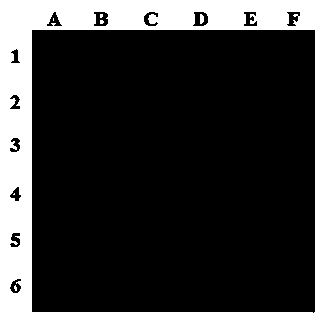Method for detecting rice stripe virus in single-head laodelphax striatellus through dot-ELISA (dot-enzyme-linked immuno sorbent assay)
A technology of rice stripe virus and SBPH, applied in measuring devices, instruments, scientific instruments, etc., can solve the problems of different physiological characteristics, no homology, no commonality, etc., to save detection time and avoid crossover of samples Pollution, the effect of saving testing costs
- Summary
- Abstract
- Description
- Claims
- Application Information
AI Technical Summary
Problems solved by technology
Method used
Image
Examples
Embodiment 1
[0030] Embodiment 1: The detection of RSV carried by a single head of SBPH was carried out with samples of SBPH collected in the field, and the carrier rate of SBPH was calculated.
[0031]The specific steps are as follows: Collect 30 SBPHs in the field with an insect extractor and put them into a bottle prepared with rice seedlings in advance to facilitate the survival of SBPH; store the collected SBPH in a -80°C ultra-low temperature refrigerator. During detection, pick a single-headed SBPH with a sterilized toothpick, place it in a clean 1.5mL centrifuge tube filled with three 2mm small steel balls, add 150μL of 0.01 mol / L PBS buffer to each centrifuge tube, and put Oscillate and grind for 60 s in a high-throughput tissue grinder with an oscillation frequency of 60 Hz until obvious tissue disappears. Put the centrifuge tube into a centrifuge at 4°C and centrifuge at 12000rpm for 3min, and the supernatant is ready for use. Use a pencil to draw a line on the outer paper of t...
Embodiment 2
[0032] Example 2: The detection of RSV carried by a single head of SBPH was carried out with samples of SBPH raised in a greenhouse, and the virus-carrying rate of SBPH was calculated.
[0033] The specific steps are as follows: after collecting 60 SBPHs reared in the greenhouse with an insect extractor, put the SBPH in a -20°C refrigerator for 5 minutes to freeze. Pick a single head of SBPH with a sterilized toothpick, put it into a 1.5mL centrifuge tube, add 200 μL of 0.01 mol / L PBS buffer to each centrifuge tube, and mash it with a tissue grinder until the obvious tissue disappears. Put the centrifuge tube into a centrifuge at 4°C and centrifuge at 12000rpm for 5min, and the supernatant is ready for use. Use a pencil to draw a line on the outer paper of the NC membrane, so that the NC membrane is printed with grid marks, each grid size is 0.7 × 0.7 cm, cut the membrane with a size of 7 × 9 grids, and put it flat into the center of a 9 cm diameter petri dish. Take 2 μL of t...
Embodiment 3
[0034] Embodiment 3: The detection of RSV carried by a single head of SBPH was carried out with the samples of SBPH collected in the greenhouse, and the carrier rate of SBPH was calculated.
[0035] The specific steps are as follows: After collecting 79 SBPHs reared in the greenhouse with a fluke, put the SBPHs into a -20°C refrigerator for 5 minutes to freeze. Use a sterilized toothpick to pick a single head of SBPH, put it in a clean 1.5mL centrifuge tube filled with five 1mm small steel balls, add 250μL of 0.01 mol / L PBS buffer to each centrifuge tube, and place it in a shaker Oscillating and grinding for 90 s in a high-throughput tissue grinder with a frequency of 60 Hz until obvious tissue disappears. Put the centrifuge tube into a centrifuge at 4°C and centrifuge at 12000rpm for 10min, and the supernatant is ready for use. Use a pencil to draw a line on the outer paper of the NC membrane, so that the NC membrane is printed with grid marks, each grid size is 0.7 × 0.7 cm...
PUM
 Login to View More
Login to View More Abstract
Description
Claims
Application Information
 Login to View More
Login to View More - R&D
- Intellectual Property
- Life Sciences
- Materials
- Tech Scout
- Unparalleled Data Quality
- Higher Quality Content
- 60% Fewer Hallucinations
Browse by: Latest US Patents, China's latest patents, Technical Efficacy Thesaurus, Application Domain, Technology Topic, Popular Technical Reports.
© 2025 PatSnap. All rights reserved.Legal|Privacy policy|Modern Slavery Act Transparency Statement|Sitemap|About US| Contact US: help@patsnap.com

